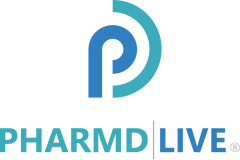The key to the short- and long-term viability of your remote patient monitoring program lies in educating the patient to ensure buy-in and in implementing quality RPM technologies that function properly with as little post-launch attention as possible.
Explaining the Home HPM Model
Securing patient buy-in begins with making sure your patients fully understand the concept of remote patient home monitoring.
Some patients will know a little bit about the remote patient home monitoring model while others will not have heard of it at all.
Sometimes RPM will be confused with other telehealth services or the in-hospital patient monitoring systems used to track body temperature, respiration, arrhythmia, blood-level oxygen saturation, and blood-level carbon dioxide.
Outline Remote Patient Home Monitoring
Securing patient buy-in begins with making sure patients grasp the concept of RPM.
Many patients will only have heard of RPM, while others may not know such a program exists.
Make sure patients don’t confuse RPM with other telehealth categories or with existing patient monitoring systems used in healthcare facilities to track common healthcare data and information.
Explain How RPM Technologies and Processes Work
The next goal is to provide patients with a general understanding of how RPM technologies and processes work.
Show patients the device they’ll be connected with and explain how it operates, including troubleshooting a device in error and what type of healthcare information will be transmitted.
Explain the Value of Remote Patient Home Monitoring
In the introductory stages, some patients will need an explanation of the value and benefits of this next-generation healthcare model.
Here are just a few of the rationalizations that you can share with them:
- Keeps patients healthier — Including allowing people to reduce the need for office visits to receive the services provided via remote patient home monitoring
- Increases collaboration between patient and provider — Both parties will receive the same information which will improve healthcare strategies and outcomes
- Allows the patient to be a more active participant in their care — Again, the value of patient and physician receiving the same information simultaneously
- Reduces the number of hospitalizations, lengths of stay, and readmissions — Because potential problems will be handled before they become major challenges
- Reduces patient overall costs — Not only with respect to healthcare costs but secondary costs such as travel
- Permits older or disabled patients to remain at home longer — As well as to delay or avoid moving into long-term healthcare facilities
Once patients understand that they will not need to leave their home to receive care — or that home RPM will deliver enhanced care at a cheaper cost — your practice will see an increase in overall buy-in.
Provide Instructions on RPM Device Setup and Usage
Onboarding new RPM patients should make sure they clearly understand what is device setup and sources of technical assistance — never assume that included instructions will suffice for all users.
Ambiguity or difficulty in setup and usage could mean patients grow frustrated, disengage, or opt-out of the program.
The company you partner with to serve as your RPM vendor and the type of program you enter into will figure into how much work you will need to do to help patients complete these processes and troubleshoot issues that arise.
Full-service RPM programs typically include a proactive vendor team that provides technical support while self-managed programs may require the practice to handle the majority of the work.
Deliver Remote RPM Education Via Multiple Channels
Employing a variety of communication methods to cater to different patient needs and learning styles creates an optimal cornerstone to launch a successful program.
While some patients may prefer an initial discussion about the RPM program in person, over the phone, or via videoconference, others may prefer receiving information by postal mail, email, or through links to resources delivered via text message.
Consider creating videos that provide information about your program and specific devices, setup and troubleshooting, and demonstration of more complex devices.
Strengthen Home RPM Education
Utilizing a variety of communication methods that cater to different patient needs is an ideal start to a quality RPM program.
While some patients may prefer an initial discussion about home RPM directly, on the phone, over videoconference, some may prefer direct mail, email, or across text messages.
Updating your practice’s website with info about your program, specific devices, and setup and troubleshooting may be a valuable reference for tech-savvy patients.
For the operation of more complex devices with Bluetooth functionality, consider creating or linking to videos.
In fact, the first question you should ask during the initial program stage is how do your patients prefer to get their training information.
This places your patients in greater control of their experience and may alleviate some hesitation about using new technology.
Making it as easy for patients to join and actively participate in your home RPM program will equate to success in delivering virtual care, easy streamlining of operations, and minimizing the investment of practice costs and resources.
